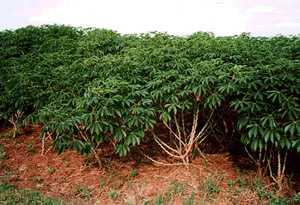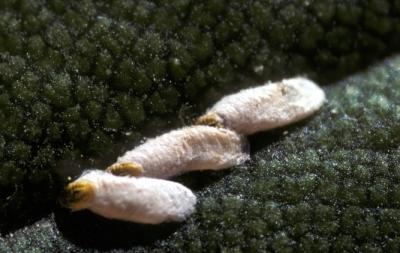Images

© IITA Annual Report 1998, Courtesy of EcoPort, (www.ecoport.org)
|
Cassava crop
|

© CIAT, UAGRM Courtesy of EcoPort, (www.ecoport.org)
|
Cassava roots
|

© Purdue University, USA
|
Cassava (Manihot esculenta) crop
|

© Purdue University, USA
|
Cassava (Manihot esculenta)
|

© A.A.Seif, icipe
|
Cassava brown leaf spot
|

© Grahame Jackson (Courtesy of EcoPort)
|
Cassava bacterial blight (Xanthomonas campestris pv. manihotis). Angular leaf spots, sometimes with yellow haloes, rapidly expanding, leading to necrosis and leaf fall.
|

© Georg Goergen (Courtesy of EcoPort, www.ecoport.org)
|
Variegated grasshopper (Zonocerus variegatus)
|

© Georg Goergen (Courtesy of EcoPort, www.ecoport.org)
|
Striped mealybug (Ferrisia virgata)
|

© A. M. Varela, icipe
|
Damage by the cassava green mite (Mononychellus tanajoa)
|

© A.M. Varela, icipe
|
Parasitic wasp of mealybugs
|

© USDA ARS, Bugwood.org
|
Scale insect. This is not the cassava scale, but an armored scale (related species)
|

© F. Haas, icipe
|
Eggs and larva of the cassava green mite (Mononychellus tanajoa), real size 0.2 mm.
|

© F. Haas, icipe
|
Female of the cassava green mite (Mononychellus tanajoa), real size 0.8 mm.
|

© F. Haas, icipe
|
Male of the cassava green mite. (Mononychellus tanajoa), real size 0.8 mm.
|

 Back
Back